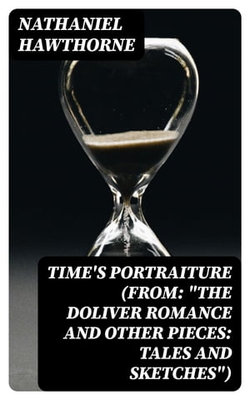In 'Time's Portraiture,' a component of 'The Doliver Romance and Other Pieces: Tales and Sketches,' Nathaniel Hawthorne weaves a narrative that encapsulates the ethereal essence of temporality through his signature dark romantic style. The tale serves as a complex allegory, meticulously crafted to explore the intricate and often shadowed relationship between time and human existence. In Hawthorne's literary universe, this work stands out as a profound contemplation on the marks that time etches upon the soul, all while exhibiting his masterful use of symbolism and keen psychological insight, attributes that have cemented his works in the American literary canon. The style here not only reinforces the era's intellectual atmosphere but also conveys Hawthorne's deep preoccupation with the moral conflicts that drive human behavior. Nathaniel Hawthorne, a luminary of 19th-century American literature, is renowned for his acute dissection of moral dilemmas and the human condition. 'Time's Portraiture' likely germinated from Hawthorne's own contemplations and life experiences that often reflect a skepticism of the transcendentalist movement of his time. Hawthorne's other masterpieces, including 'The Scarlet Letter' and 'The House of the Seven Gables,' showcase his distinct, brooding literary voice and illustrate the profound influence of Puritan New England's history and culture on his work. His portrayal of the complexities of sin, guilt, and redemption is echoed in this piece, revealing his philosophical and emotional depth and leading him to query the very essence of time. This edition from DigiCat Publishing presents Hawthorne's 'Time's Portraiture' as a timeless gift to the literary aficionado. Readers with a penchant for introspective literature that not only entertains but also provokes thought will find themselves at home within Hawthorne's vivid pages. The tale is a commendation for those who appreciate literary craftsmanship that elegantly merges the gothic with psychological exploration and offers an enriching experience for both scholars and enthusiasts of classic American literature.



Share This eBook: